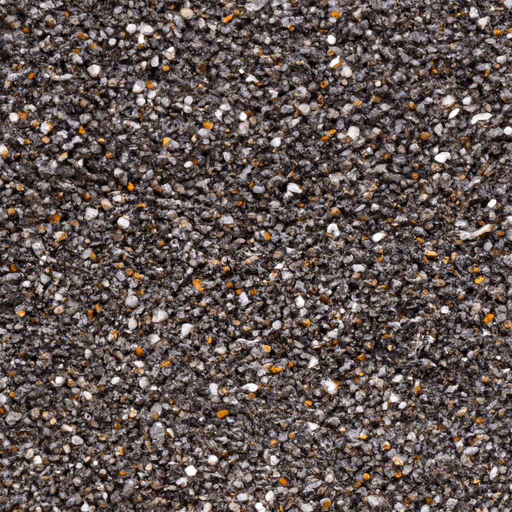Cooking with Chia Seeds: A Nutritious and Versatile Superfood
Chia seeds, originating from the Salvia hispanica plant, have gained massive popularity in recent years due to their remarkable health benefits and diverse culinary uses. These tiny black or white seeds are not only packed with essential nutrients but also possess a unique gel-like texture. In this blog post, we’ll explore the taste, common uses, nutritional value, and fascinating history of chia seeds.
Taste and Texture
Chia seeds have a mild, nutty flavor that pairs well with both sweet and savory preparations. When soaked, they develop a gel-like consistency, making them an excellent thickening agent for various dishes. This texture adds a delightful mouthfeel to foods, creating a pleasing culinary experience.
Culinary Uses
The versatility of chia seeds makes them a fantastic addition to numerous recipes. Here are some popular ways to incorporate them into your cooking:
1. Chia Pudding
Chia pudding has become a go-to breakfast or healthy dessert option for many health-conscious individuals. By combining chia seeds with a liquid like almond milk or coconut milk, you can create a creamy and nutritious pudding. Add your favorite fruits, nuts, or spices for extra flavor and texture.
2. Smoothies
Boost the nutritional profile of your smoothies by adding a tablespoon or two of chia seeds. They will not only enhance the texture but also provide a healthy dose of fiber and omega-3 fatty acids.
3. Baking
Chia seeds can be utilized as a vegan substitute for eggs when mixed with water, acting as a binding agent in baked goods. Additionally, they can be sprinkled on top of bread, cookies, or muffins for an appealing crunch.
4. Salads and Yogurts
Sprinkle chia seeds on top of salads or mix them into yogurt to add an extra layer of texture. Not only will it enhance the overall taste, but it will also increase the nutritional value of your meal.
Nutritional Powerhouse
Behind their unassuming appearance, chia seeds pack a powerful nutritional punch. These tiny seeds are loaded with fiber, protein, healthy fats, vitamins, and minerals. Here’s a breakdown of their nutritional value per ounce (28 grams):
- Fiber: 11 grams
- Protein: 4 grams
- Omega-3 Fatty Acids: 5 grams
- Omega-6 Fatty Acids: 1.6 grams
- Vitamin C: 4% of the Recommended Daily Intake (RDI)
- Vitamin B Complex: Thiamin, Riboflavin, and Niacin
- Minerals: Calcium, Phosphorus, Magnesium, and Potassium
With their impressive nutritional profile, chia seeds are an excellent addition to a balanced diet, offering numerous health benefits, including improved digestion, enhanced heart health, and increased energy levels.
A Storied History
Chia seeds have a rich history, dating back to the ancient Aztec civilization. The word “chia” itself comes from the Mayan language, meaning “strength.” These seeds were prized by both civilizations for their exceptional nutritional properties and the energy they provided. It’s said that Aztec warriors relied on chia seeds as a survival food during long journeys or battles.
Fun Facts
Here are a few intriguing facts about chia seeds that you may find interesting:
- Chia seeds can absorb up to 12 times their weight in water, forming a gel-like substance.
- They were used as a form of currency in ancient Mesoamerica.
- Chia seeds were one of the main ingredients in “chianato,” a beverage popular among Aztec nobility.
- Due to their high fiber content, chia seeds may aid in weight loss by promoting feelings of fullness and reducing appetite.
Now that you’ve gained a comprehensive understanding of chia seeds, their taste, uses, nutritional value, and fascinating history, it’s time to explore the culinary possibilities they offer. Whether it’s a chia pudding, smoothie, or a sprinkle on your salad, these versatile little seeds are a valuable addition to any kitchen cupboard. Embrace the benefits of chia seeds and unlock their potential in your cooking for a healthier and more enjoyable culinary experience.
Interesting facts about chia seeds:
- Chia seeds come from the flowering plant Salvia hispanica, which is native to Central and South America. They were a staple food for the ancient Aztecs and Mayans, who highly valued their nutritional properties.
- The word “chia” comes from the ancient Mayan word for “strength.” Chia seeds were believed to provide energy and endurance to warriors.
- Chia seeds are small, oval-shaped, and have a shiny exterior. They can vary in color, ranging from white to brown or black.
- Today, chia seeds are commonly used in baking and cooking. They can be sprinkled on top of yogurts, added to smoothies, used as an egg substitute in vegan baking, or mixed into puddings and overnight oats.
- When soaked in liquid, chia seeds develop a gel-like texture due to their high soluble fiber content. This gel can thicken recipes and is often used as a natural thickening agent.
- Chia seeds are rich in nutrients. They are an excellent source of omega-3 fatty acids, fiber, protein, and antioxidants. They also contain various vitamins and minerals such as calcium, phosphorus, and magnesium.
- Due to their high fiber content, chia seeds can absorb up to 10 times their weight in water. This property can help promote feelings of fullness and aid in digestion.
- Chia seeds are gluten-free, making them suitable for individuals with gluten sensitivity or celiac disease.
- Chia seeds have a long shelf life and can be stored for extended periods without spoiling. This is due to their natural antioxidants, which help prevent rancidity.
- In addition to their culinary uses, chia seeds have been used historically as a medicinal plant. They were believed to aid in digestion, provide hydration, and relieve joint pain. However, it is important to note that these historical uses have not been scientifically proven.




Use the share button below if you liked it.
It makes me smile, when I see it.